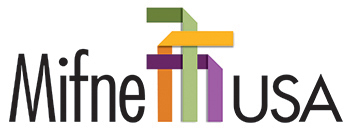Why are you conducting a study?
We are hoping to provide scientific evidence of the efficacy of the Mifne Method in treating autism spectrum disorders in infants and toddlers.
The Mifne study seeks to measure change in toddler social-communication skills and parent sensitivity and responsiveness that occurs over the course of the 3 week intensive treatment offered as phase one of the Mifne Method. A secondary aim of the study is to test the hypothesis that changes in parent behaviors lead to changes in child behaviors.
How is the study going to be conducted?
The study will examine the first 3 weeks of intensive treatment in which the family receives daily intervention by a team of providers using the Mifne method. Using real time interactions recorded on video, the study will identify when, during this initial period of treatment, any changes in the child’s capacity to connect with others shifts. The change will be measured by quantifiable elements that can be repeated and compared among different children and different caregivers.
How long is the study?
Due to the limited number of families receiving the treatment per year, the study will require 2 years in order to collect enough data. This data will allow the investigators to arrive to valid conclusions about the the treatment.
Who is conducting the study?
The study will be conducted by Ted Hutman, PhD an Assistant Professor of Psychiatry and Biobehavioral Sciences at the David Geffen School of Medicine at UCLA. We are thrilled about this collaboration because of the extensive experience Dr. Hutman has in the study of autism spectrum disorders, and his cutting edge research methodology using video analysis of real time interactions. He belongs to a prestigious university which will have weight and significance for the local community.
What are the next steps after the study?
Following the study we are hoping for impact in several directions. We are hoping the study will be published in some reputable journals which will increase the awareness of the Mifne method among the professional community that offers treatment for children and families impacted by ASD. Our ultimate desire is to establish Mifne programs in southern California and nation-wide so the Mifne method can be made available to all families in need.
Why would I want to invest in this project?
In the last 10 years the autism rate has increased nearly fivefold in California. One in 94 children is receiving special education services for autism in 2011, compared to one in 431 a decade ago. With the increased number of children and families affected by autism, the need for services increases dramatically. The lifelong effects of the disorder poses a great societal and economic burden to effectively support the individuals and families in need.
The earlier the intervention, the better – Research universally supports that early intervention has a significant advantage in helping children with an autism develop on the right track for independent functioning. It is suggested that the same treatment offered to older children does not yield the same results. Sadly, treatment options offered to children at 24 months or younger are few.
The findings of this study will be an important step towards more effective treatment options for infants and toddlers diagnosed with autism.
Mifne USA is a non profit organization with 501c status that allows any investor to claim their contribution as a non-taxable donation.
My child is over the age of 2, what can I do now?
If your child has already celebrated her second birthday she is still considered young and if found in need, deserves to receive early intervention services at her local community. In order to be eligible, she needs to be further assessed through consultation with a professional who specializes in diagnosis of disorders on the autistic spectrum. Such professionals could be a developmental pediatrician or a qualified professional affiliated with a treatment program for autism. Many communities have centers that provide treatment, diagnose and define eligibility for the treatment. Since each state has its own system, feel free to contact us with further questions and we will assist you to find help in your local community. info
I have a baby between birth and age 2 who is showing signs of autism what can I do?
If your child is between 16 and 30 month, please take a moment to take the M-Chat. which is a modified checklist for autism in toddlers and is a validated developmental screening tool. It is designed to identify children who may benefit from a more thorough developmental and autism evaluation. If your child scores in the positive range, contact your child’s pediatrician and share the results. You can also consult with a developmental pediatrician who can refer you to local services providing intervention in your community. If you like further assistance from us finding intervention in your community, feel free to contact us.
I currently have a program that treats young children with autism. How can I get training for my staff in this method.
Dr. Hanna Elohim speaks at numerous conference world wide as well as offers specialized training. Click here for further inquiry.
